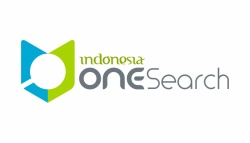PERBEDAAN HASIL BELAJAR GEOGRAFI SISWA MENGGUNAKAN MODEL PEMBELAJARAN KOOPERATIF TIPE STUDENT TEAM ACHIEVEMENT DIVISION (STAD) DAN NUMBER HEADS TOGETHER (NHT)
Abstract
One variation of cooperative learning model to create a fun learning environment and can improve learning outcomes is the implementation of cooperative learning type NHT and STAD. The objectives of this research were to find out: (1) The differences on average of geography learning outcomes by implementing the cooperative learning model type NHT and STAD, (2) a significant differences on average of geography learning outcomes by implementing the cooperative learning model type NHT and STAD, (3 ) The difference on gain of geography learning outcomes by implementing the cooperative learning model type NHT and STAD, and (4) A significant difference on gain of geography learning outcomes by implementing cooperative learning model type NHT and STAD. The method used in this research was Quasi Experiment. The population in this research was the students of class XI Social year 2012-2013. The sampling was taken by using Puposive Sampling technique by determining the relative characteristics including the mastery of learning outcomes, selected class XI Social I and XI Social 3 SMA Negeri 4 Metro. Data collecting tool used was a test of natural resources matter. The software used to process the research data was SPSS version 17.0 For Windows. The conclusion in this study: (1) There is a difference on average of geography learning outcomes by implementing cooperative learning model type NHT and STAD, (2) The average of geography learning outcomes by implementing cooperative learning model type NHT is higher than type STAD, ( 3) There is a difference increase (gain) on the average of geography learning outcomes by implementing cooperative learning model type NHT and STAD ,and (4) The increase (gain) on the average of geography learning outcomes by implementing cooperative learning model type NHT is higher than type STAD.
Key Word: Number Heads Together, Student Team Achievement Division, and Geography Student Learning
Full Text:
PDFReferences
Lie, Anita. 2010. Mempraktikkan Cooperative Learning di Ruang-Ruang Kelas. Grasindo: Jakarta.
Arikunto, Suharsimi. 2002. Prosedur Penelitian. PT Rineka Cipta: Jakarta.
Undang- Undang Nomor 20 tahun 2003 tentang Sistem Pendidikan Nasional
Djamarah, Syaiful bahri dan Zain, Aswin. 2010. Strategi Belajar Mengajar. PT Rineka Cipta: Jakarta.
Huda, Miftahul. 2011. Cooperative Learning. Pustaka Belajar. Yogyakarta.
Isjoni. 2011. Cooperative learning. CV Alfabeta: Bandung.
Slameto.2003. Belajar dan Faktor-Faktor Yang Mempengaruhinya. PT Rineka Cipta: Jakarta.
Slavin, Robert E. 2011. Cooperative Learning Theory, Research, and Practice (Terjemahan). Nusa Media.: Bandung.
Sudjana. 2002. Metode Statistika. PT Tarsito: Bandung
Trianto. 2011. Mendesain Model Pembelajaran Inovafif-Progresif. Kencana Prenada Media Group: Jakarta.
Santoso, Eko Budi. 2011. Model Pembelajaran Kooperatif Tipe NHT.
(http://raseko.blogspot.com/2011/05/model-pembelajaran-kooperatif-tipe-ht.html diakses tanggal 13 maret 2012 jam 10.22 AM)
DOI: https://doi.org/10.23960/jpg.v1i3.296
Refbacks
- There are currently no refbacks.
INDEX JOURNAL










